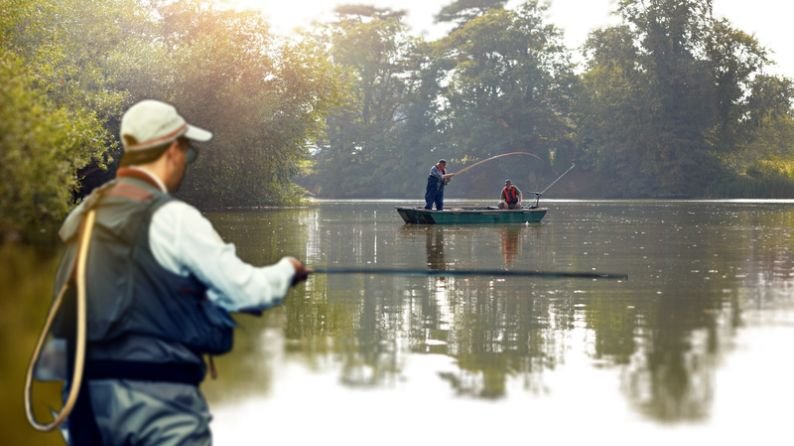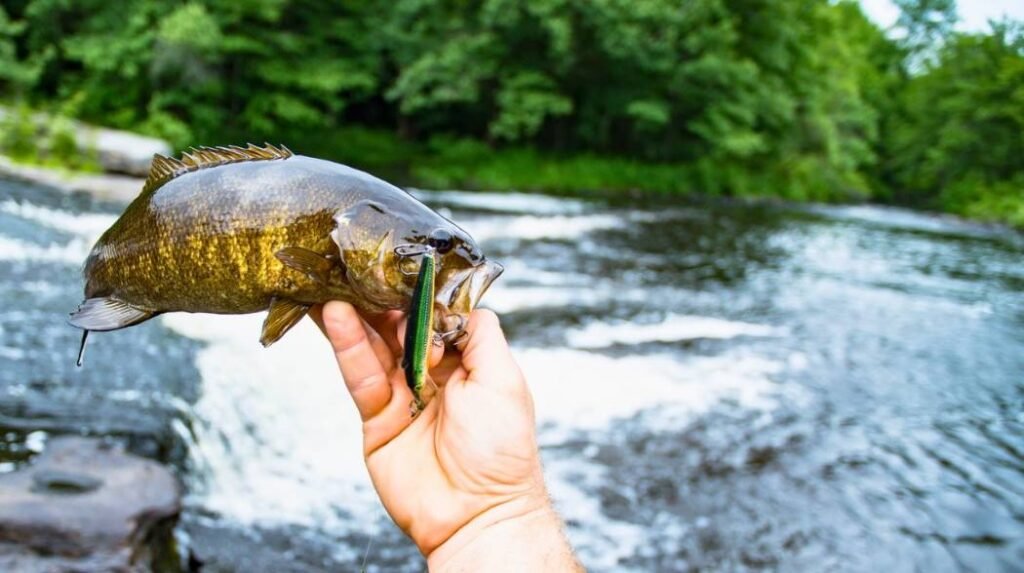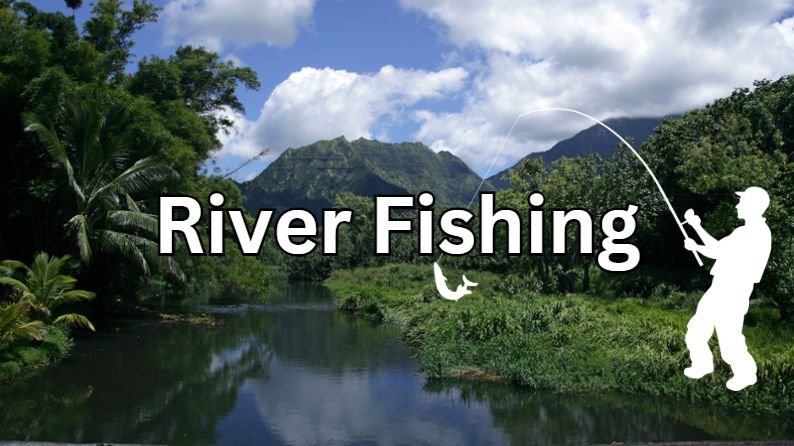River Fishing Techniques and Strategies for Beginners
Welcome, eager new anglers, to the thrilling world of river fishing! As you embark on this journey, arm yourselves with fundamental knowledge about the waterways and fish that await you. Understanding trout behavior patterns and river habitats will prove invaluable in helping you achieve success.
When starting out, bear in mind that river fishing presents unique challenges compared to still waters like lakes and ponds. Rivers have irregular currents and structures below the surface which affect how you should select equipment, rigs, and baits. But navigating these complexities is all part of the exciting learning process. With persistence and an observant mindset, your abilities will progress rapidly.
This overview equips you with essential pointers to set up a solid foundation. You’ll discover optimal gear for beginners, basic casting methods, fish handling techniques, safety recommendations, and prime fishing spots suited for newcomers. Additionally, tips are included on reading the water, understanding fish feeding patterns, stealth tactics, and adapting your strategies depending on changing conditions.
So take a deep breath and prepare to delve into the dynamic world that awaits below the rippling surface!
Key Takeaways
- Select a medium-power rod around 7 feet along with smooth drag reels spooled with 6 to 10 lb. test monofilament or braided line when starting out. Add bobbers, splits shot and small hooks.
- Practice basic overhead and side-arm casting techniques on grassy fields before fishing trips to build skill. Use smooth, pendulum motions.
- Handle fish gently using wet hands. For smaller specimens, grip the lower lip area to unhook and immediately release back into the water.
- Prioritize safety by wearing secure wading footgear, fastening on PFDs when necessary, and never wading out alone. Respect the power of currents.
- Focus on rivers with slow currents, structures to break flows, and easy access when beginning. Multi-species waters let you refine skills on feisty sunfish and catfish before pursuing finicky trout.
- Vary retrieves, bait/lures and target locations systematically when experiencing lulls until fish patterns emerge. Take notes on productive methods.
- Persist through early challenges and appreciate the nuanced process of Skill progression. Savor nature’s beauty and balance through ethical angling practices.
Essential Tips for Beginners

Embarking on a new pursuit requires having the proper gear for the job. When river fishing, appropriate equipment makes a world of difference in ease of use, efficiency, and of course, your chances of hooking fish!
As a beginner, medium-power rods around 7 feet in length are ideal. The moderate flexibility absorbs the pull of feisty fish while the length enables making long casts. Reels with smooth drag systems prevent line snapping when reeling in strong swimmers. Suitable all-purpose lines would be 6 to 10 pound test monofilament or braided options. And don’t forget small split shot weights and bobber floats to detect light bites.
When ready to start casting, beginners should use simple overhead or side cast techniques. Face sideways in the direction you want your lure/bait to land. Bring the rod backward while pointing your thumb up until it’s vertical above your shoulder. Then swiftly whip it forward like a pendulum, releasing your thumb just as the rod is parallel to the water. This takes practice, so repeat this motion while fine-tuning before heading out.
While reeling in your catch, use steady pressure and avoid yanking motions. Once the fish is near the shoreline, grip it gently but firmly by the lower lip area. For smaller specimens, wet your hands first to protect their protective slime coating. Then unhook the fish while it’s still in the water whenever possible. Releasing it without dragging onto land minimizes injuries.
For safety, beware of slippery rocks, abrupt changes in depth, and faster currents that can sweep you off your feet. Wear proper wading footgear with strong traction and good ankle support. Consider a personal flotation device (PFD) and always fish with a buddy. And above all, don’t underestimate the power of flowing water. Prepare for unexpected hazards.
When in doubt, don’t go it alone. Seek pointers from experienced anglers on selecting gear, techniques, and reading the water. Learning from others who have navigated tricky situations will pay dividends. They can also provide insider recommendations on locations and times.
Suitable Fishing Spots for Beginners

When getting your feet wet in river fishing, choose waterways with calm sections and easy shoreline access. Mild currents let you practice casting mechanics and properly working lures without getting overwhelmed. Areas near bridges, tributaries, and sandbars break up swift waters, creating pockets with reduced flow.
Focus efforts around downed trees, overhanging vegetation, submerged stumps, rocks, and steep cut banks. Structure and cover attract ambush predators like bass and trout while concealing your presence. Scan for bubbles, ripples on the surface, or moving branches which can indicate active fish.
Multi-species rivers enable you to refine skills on easier catches like sunfish and catfish. These scrappy biters strike a variety of bait. Chasing feisty panfish will hone reflexes for hook-setting when more prized trophies come along. Plus, pulling in numbers boosts confidence for confronting tougher adversaries.
When evaluating new fishing holes, verify regulations and license requirements. Numerous urban waterway have specific restrictions. Ensure you comply with all guidelines for legal, ethical angling in protected habitats.
Additional Tips for Successful River Fishing

Reading the water flow, clarity, structure and adjusting your strategies separate the dedicated anglers from dabbling novices. Observe conditions each time before baiting up. Evaluate water opacity, speed of current, weather, time of day and signs of feeding fish. Understanding the dynamic ecosystem prepares you to react to productive patterns.
Cloudy water after storm influx requires louder, vibrating lures to trigger reaction strikes. Dim lighting shifts feeding intensity based on species, so concentrate on different targets. Prime times usually occur at sunrise/sunset or incoming/outgoing tides. Watch for swirls, jumping baitfish or suspicious boils which scream “feeders below!”
Stealth reigns supreme when fish grow cautious and easily spooked in flowing water. Stalk the banks slowly and methodically while scanning. Then pause and cast to structure. Remaining quiet and patient often yields the most action.
When experiencing lulls in action, experiment with bait modifications and retrieval techniques like jigging, slow rolling and cranking to trigger strikes. A fish that just rejected a night crawler might ravenously attack salmon eggs. So adjust gear until finding the sweet spot.
Eventually your accumulated knowledge about favored structure spots, bait choices and techniques will bring sustained success. Keep logs detailing conditions and patterns for each trip. Reviewing what previously worked or failed narrows future experimentation. Through continually adapting as the river changes, your abilities evolve into mastery.
Conclusion
River fishing presents unique complexities from other freshwater habitats with its ebb and flow of ever-changing conditions. Do not let the myriad techniques overwhelm your eager spirit. Mishaps and skunked outings provide invaluable learning experiences for troubleshooting problems.
Embrace the early challenges of perfecting casting accuracy, presentation, and hook-setting. The long journey of honing abilities contains the true richness of angling. Savor the excitement of exploring new waterways teaming with possibility and mystery. But most of all, appreciate nature’s balance by protecting the integrity of these vital ecosystems through ethical practices. This ensures bountiful rewards for all who follow downstream.
Soon these hard-won lessons accumulate into almost instinctual knowledge about your watery hunting grounds. Master anglers admit an aura of split-second intuition eventually emerges. So continue wading ahead undaunted into river fishing’s school of hard knocks. Enjoy the ride as skills progress incrementally trip by trip!
Frequently Asked Questions
What kind of river is best for beginners?
Beginners should start fishing in calm rivers with slow currents, mild depths, and easily accessible banks and shorelines. This safer environment lets you practice fundamental skills without advanced gear. Rivers containing sunfish and catfish provide easier early targets to build confidence.
What rigs/weights should beginners use?
Good starter rigs include simple bobbers with split shot weights to detect light bites. Carolina rigs work well to drift or hop live bait along bottom. Add small bullet weights to get lures and jigs down to fish holding in deeper holes around structure. Avoid heavy sinkers that snag excessively.
What are the best casting techniques for new river anglers to learn?
Focus first on mastering smooth overhead and side arm pitches and short casts before attempting longer distance lobs. Use the pendulum motion maintaining a vertical rod initially. Control accuracy first before adding powerful force. Once that feels comfortable, start lengthening casts via relaxed follow-throughs. Proper technique prevents frustrating tangles and snags.
What safety precautions are most important?
Wear secure wading shoes with strong traction, use sun protection, bring insect repellant and retrive nets for handling fish. Waterproof storage for small items like phones prevents mishaps. Vest style and inflatable personal flotation devices add security if wading deeper waters. And always fish accompanied by others who can assist if problems occur.
What do I do when it seems no fish are biting?
First observe conditions closely and try varying techniques, current seams or depths. Adjust bobber heights, rigs, bait style if possible. Fish finer lines to detect subtle bites. Persistence often pays eventually. But relocating to more active structure and feeding lanes supersedes waiting for inactive fish to respond. Locate the biters!

